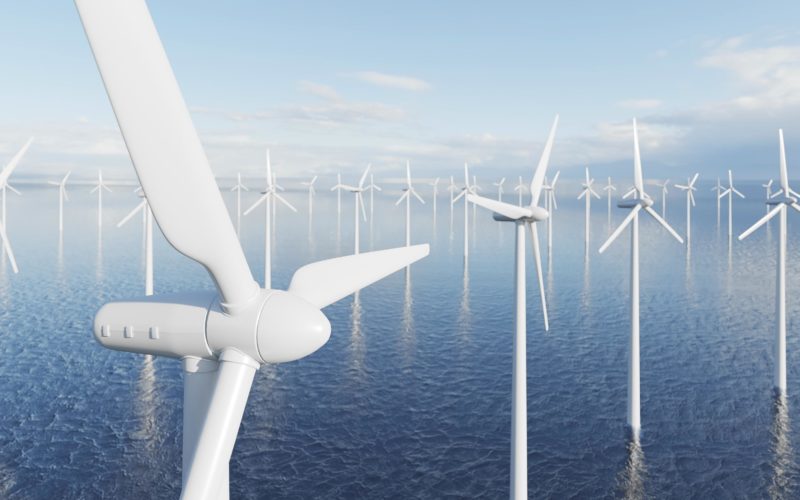Can we really expect the world to shift entirely to renewable energy and eco-friendly materials anytime soon? The push for a greener future is stronger than ever, with breakthroughs in solar power, electric vehicles, and recycling making headlines daily.
But behind the optimism lies a more complicated picture — one where certain technologies scale quickly, while others face long timelines and tough technical challenges. Let’s take a look at what’s changing now, what will take decades to achieve, and why fossil fuels still play a role in the journey toward sustainability.
What We Can Change Today — The Rapid Movers in the Green Transition
Renewable energy sources like solar and wind are leading the way in the global shift to greener power. Solar panel costs have dropped by over 80% in the past decade, making it more affordable for both homeowners and utilities to adopt.
Wind energy, particularly offshore wind, is also scaling quickly in several countries. These technologies are proven, scalable, and increasingly integrated into existing power grids, which allows for steady growth.
Electric vehicles are another area of rapid change. Battery costs, once the biggest barrier to widespread adoption, have decreased significantly — falling from around $1,200 per kilowatt-hour in 2010 to under $150 today.
This drop, combined with expanding charging infrastructure and increasing consumer interest, has helped EVs grow from a niche market to a mainstream choice. Automakers worldwide are investing heavily, with some pledging to phase out internal combustion engines within the next two decades.
In the materials space, certain recycling processes have already proven effective and scalable. Aluminum and paper recycling are widely practiced, reducing both energy consumption and environmental impact.
Switching to LED lighting and implementing smart thermostats have also become common and practical ways to improve energy efficiency in homes and businesses. These solutions don’t require waiting for future breakthroughs — they’re available now, saving energy and cutting costs immediately.
Fossil Fuels — Why They’re Still in the Mix
Despite the growing push for renewable energy, fossil fuels remain deeply embedded in today’s global energy system. They currently supply around 80% of the world’s energy needs, powering industries, heating homes, and fueling transportation networks that renewables can’t yet fully replace.
Certain sectors (like aviation, shipping, and heavy manufacturing) require energy-dense fuels or extremely high heat levels that solar and wind power, even with storage, can’t reliably provide at scale. In these sectors, ensuring fuel quality and system efficiency is critical and often depends on components like fuel gas filters, separators, and pressure regulators, which help protect engines and turbines from contaminants, moisture, and pressure fluctuations that can impair performance or cause costly downtime.
Energy reliability is another reason fossil fuels persist. Solar and wind, while growing fast, depend on weather conditions and daylight hours. Until energy storage solutions advance enough to cover long gaps in renewable generation, fossil fuels act as a backstop to prevent blackouts and keep the grid stable. Natural gas, in particular, is often used as a flexible “bridge fuel” because it can ramp up quickly when renewable output drops, providing consistent supply.
Phasing out fossil fuels will be a gradual process, not an overnight change. Even as renewables and green technologies advance, fossil fuels will likely remain in the mix for several more decades, especially in regions where infrastructure and resources for clean energy are limited.
The good news is that their role is shrinking as investments in renewables, energy storage, and efficiency continue to grow. But for now, fossil fuels still serve a practical purpose in bridging the gap between today’s energy demands and tomorrow’s cleaner future.
What Might Take Decades — The Slow Movers and Hard Problems
One major hurdle in the green transition is upgrading the power grid to handle intermittent energy sources like solar and wind. Existing grids were designed for steady, centralized fossil fuel power, not fluctuating renewables.
Integrating these sources requires advanced grid management systems and large-scale storage solutions to balance supply and demand. Upgrading these systems takes time, investment, and coordination across many stakeholders, which slows progress.
Energy storage technology, while advancing, is still a bottleneck for widespread renewable adoption. Lithium-ion batteries dominate the market, but they rely on materials like cobalt and lithium, which have limited supplies and complicated mining processes.
Alternative storage methods, such as flow batteries or compressed air energy storage, show promise but remain expensive or in early stages of deployment. Until storage solutions catch up, renewables alone can’t consistently meet energy demand in many regions.
Heavy industries such as steelmaking, cement production, shipping, and aviation present some of the toughest decarbonization challenges. These sectors require high heat or energy-dense fuels, making it difficult to replace fossil fuels directly.
Technologies like green hydrogen or carbon capture are being explored but are currently costly and complex to implement at scale. It’s likely these industries will remain reliant on traditional fuels or transitional solutions for several decades while innovations mature.
Why the Shift to Green Materials Isn’t Just a Swap
Switching to green materials often sounds as simple as substituting one product for another, but the reality is much more complex. For example, producing green steel (steel made using hydrogen instead of coal) requires not just new materials, but also new production methods and infrastructure. The hydrogen itself must be produced through electrolysis powered by renewable energy, which is still expensive and limited in availability.
Bioplastics are frequently marketed as a greener alternative to traditional plastics, but they come with trade-offs. Many bioplastics rely on agricultural feedstocks like corn or sugarcane, which require land, water, and fertilizers to grow.
In some cases, the environmental footprint of producing bioplastics can rival or even exceed that of conventional plastics, especially when factoring in transportation emissions or end-of-life disposal issues. Lifecycle analyses are critical to truly understanding the environmental impact of these materials.
The production of recycled concrete, another promising material, also faces challenges. While recycling concrete reduces the need for new raw materials, it requires significant energy to process and often results in lower-quality aggregate.
This means recycled concrete might not be suitable for all construction applications, particularly where high structural integrity is required. As a result, even eco-friendly materials need thoughtful consideration regarding where and how they’re used, rather than assuming they’re universally better.
Conclusion
Is a fully green future just around the corner? While the momentum behind renewables and eco-friendly materials is undeniable, the reality is a complex mix of fast-moving advances and slower, more challenging transitions. Solar, wind, and electric vehicles are scaling rapidly, but industries like steelmaking, aviation, and energy storage still face significant hurdles.
Fossil fuels, though steadily declining, remain a necessary part of the equation for now. Understanding what’s achievable today and what will take decades helps set realistic expectations and encourages smarter decisions as we work toward a more sustainable world.












